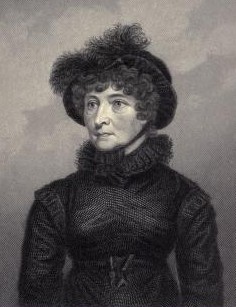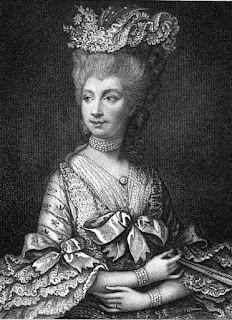 |
Sands near Chit Rock, Sidmouth
from A new guide descriptive of the beauties of Sidmouth
by Rev Edmund Butcher (1830) |
Sanditon
I wrote this post in 2012 after rereading Sanditon, Jane Austen’s last novel, completed by ‘another lady’. The description of Sanditon was of particularly interest to me as I have been researching sea bathing in the Georgian era and this gave me a contemporary, albeit fictional, description of the seaside.
The words that Jane Austen put into Mr Parker’s mouth represented the fashionable view of the seaside at the time and she must have been consciously echoing the words of such sea bathing enthusiasts as Dr Crane of Weymouth who wrote Cursory Observations on Sea-bathing.
Mr Parker
held it indeed as certain that no person could be really well, no person (however upheld for the present by fortuitous aids of exercise and spirits in a semblance of health) could be really in a state of secure and permanent health without spending at least six weeks by the sea every year. The sea air and sea bathing together were nearly infallible, one or the other of them being a match for every disorder of the stomach, the lungs or the blood. They were anti-spasmodic, anti-pulmonary, anti-septic, anti-bilious and anti-rheumatic. Nobody could catch cold by the sea; nobody wanted appetite by the sea; nobody wanted spirits; nobody wanted strength. Sea air was healing, softening, relaxing – fortifying and bracing – seemingly just as was wanted – sometimes one, sometimes the other.1
Was Jane Austen really convinced of the infallibility of the seaside as a cure for all ills? I think not! Rather she was laughing at the current fashion by creating the indefatigable Mr Parker who is both likeable and somewhat ridiculous in his extreme enthusiasm for Sanditon.
In
Emma, Mr Woodhouse and Isabella argue about the benefits of the seaside:
“It was an awkward business, my dear, your spending the autumn at South End instead of coming here. I never had much opinion of the sea air.”
“Mr. Wingfield most strenuously recommended it, sir—or we should not have gone. He recommended it for all the children, but particularly for the weakness in little Bella’s throat,—both sea air and bathing.”
“Ah! my dear, but Perry had many doubts about the sea doing her any good; and as to myself, I have been long perfectly convinced, though perhaps I never told you so before, that the sea is very rarely of use to any body. I am sure it almost killed me once.”2
Jane Austen in Devon
 |
Sidmouth from Chit Rock
from A new guide descriptive of the beauties of Sidmouth
by Rev Edmund Butcher (1830) |
Jane Austen visited the seaside on several occasions and seemed to enjoy the experience. She visited Sidmouth in Devon in 1801, and it was here that it is believed that she met the true love of her life, a gentleman who returned her affection but tragically died soon afterwards. It is no wonder that Sidmouth had a special place in her heart and Sanditon is thought to be based on Sidmouth. She stayed in Devon again in 1802, visiting Dawlish and Teignmouth.
Jane Austen in Ramsgate
According to the Austen-Leighs’
Jane Austen, Her Life and Letters, Jane visited Ramsgate in 1803 where she was seen by Sir Egerton Brydges. Her brother Frank was headquartered there at the time and it is likely that she visited him there on one of her trips to Godmersham Park.
In a letter to Cassandra, Jane wrote that a friend was talking of fixing at Ramsgate. She wrote:
Bad Taste! – He is very fond of the Sea however; – some Taste in that – & some Judgement too in fixing on Ramsgate, as being by the Sea.3
Ramsgate in Jane Austen’s novels
Ramsgate does not appear in a good light in Jane Austen’s novels. A fleeting reference is made to Ramsgate in
Mansfield Park where Tom Bertram spent a week with his friend Sneyd, but it is in
Pride and Prejudice that Ramsgate is painted as a place where bad things happen. It is at Ramsgate that Mr Wickham persuades Georgiana Darcy into an elopement. Mr Darcy wrote:
“Last summer she [Georgiana Darcy] went with the lady who presided over it, to Ramsgate; and thither also went Mr. Wickham, undoubtedly by design; for there proved to have been a prior acquaintance between him and Mrs. Younge, in whose character we were most unhappily deceived; and by her connivance and aid, he so far recommended himself to Georgiana, whose affectionate heart retained a strong impression of his kindness to her as a child, that she was persuaded to believe herself in love, and to consent to an elopement.”4
Jane Austen in Lyme Regis
In 1804, Jane visited Lyme Regis with her parents whilst her sister, Cassandra, was on a visit to Weymouth with her brother Henry. Jane enjoyed sea bathing but could never resist a jibe at fashion. In a letter to Cassandra written on September 14 1804 Jane wrote:
I continue quite well in proof of which I have bathed again this morning. It was absolutely necessary that I should have the little fever and indisposition which I had; it has been all the fashion this week in Lyme.5
Lyme Regis in Jane Austen’s novels
 |
| Rachel walking up the steps on the Cobb, Lyme Regis (2016) |
Jane was very taken with the natural beauty of Lyme Regis and this comes out in her description of it in Persuasion.
… the remarkable situation of the town, the principal street almost hurrying into the water, the walk to the Cobb, skirting round the pleasant little bay, which, in the season, is animated with bathing machines and company; the Cobb itself, its old wonders and new improvements, with the very beautiful line of cliffs, stretching out to the east of the town, are what the stranger’s eye will seek; and a very strange stranger it must be who does not see charms in the immediate environs of Lyme, to make him wish to know it better.6
They praised the morning; gloried in the sea; sympathised in the delight of the fresh-feeling breeze – and were silent; till Henrietta suddenly began again, with – “Oh, yes! I am quite convinced that, with very few exceptions, the sea-air always does good.”7
Cassandra in Weymouth
On the other hand, Jane Austen’s feelings about Weymouth, which she appears to have known only by report, were less positive. In a letter to Cassandra who was staying there, she pigeonholed it as a resort for the fashionable elite:
Your account of Weymouth contains nothing which strikes me so forcibly as there being no ice in the town; for every other vexation I was in some measure prepared, & particularly for your disappointment in not seeing the Royal family go on board on Tuesday, having already heard from Mr Crawford that he had seen you in the very act of being too late. But for there being no ice, what could prepare me? Weymouth is altogether a shocking place I perceive, without recommendation of any kind & worthy only of being frequented by the inhabitants of Gloucester [referring to a newspaper report of HRH the Duke of Gloucester’s arrival in Weymouth to visit the Royal Family]. I am really very glad that we did not go there.8
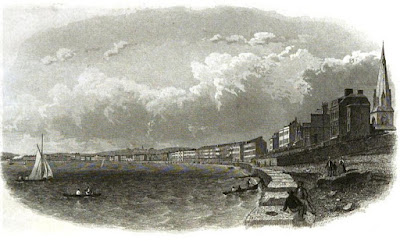 |
Weymouth and Melcombe Regis seafront
from Weymouth as a Watering Place
published by Simpkin & Marshall (1857) |
Weymouth in Jane Austen’s novels
Maybe the repeated visits of George III had made Weymouth too busy for Jane's liking. Weymouth is portrayed in her novels as a seaside resort for profligate young men and silly women and the ideal place for contracting a foolish, secret engagement.
You can read about George III's visits to Weymouth here.
In
Mansfield Park, Tom Bertram met John Yates in Weymouth, whilst in
Sense and Sensibility, silly Mrs Palmer had been visiting in Weymouth with her uncle and had therefore missed Mr Willoughby’s previous visit to Allenham.
In
Emma, it is at Weymouth that Jane Fairfax and Frank Churchill met and fell in love and entered into a secret engagement.
Mr Knightley said of Frank Churchill:
“It is not to be conceived that a man of three or four-and-twenty should not have liberty of mind or limb to that amount. He cannot want money—he cannot want leisure. We know, on the contrary, that he has so much of both, that he is glad to get rid of them at the idlest haunts in the kingdom. We hear of him for ever at some watering-place or other. A little while ago, he was at Weymouth.”9
Mrs Weston later breaks the news to Emma that Jane Fairfax is engaged to Frank Churchill:
“You may well be amazed. But it is even so. There has been a solemn engagement between them ever since October—formed at Weymouth, and kept a secret from every body.”10
Jane Austen’s opinion of Brighton
I have always believed that Jane disliked
Brighton. Like many others, I read the following quote from one of her letters, dated 8 January 1799, which suggested that her opinion of Brighton was unfavourable at best:
I assure you that I dread the idea of going to Brighton as much as you do, but I am not without hopes that something may happen to prevent it.11
However, in Deirdre Le Faye’s book of Jane Austen’s Letters, the text reads ‘Bookham’ and not ‘Brighton’. Le Faye writes in her notes that the word was crossed out in the original manuscript, presumably to hide Jane’s unfavourable reference to the home of her Cooke cousins. It was wrongly guessed at by Lord Brabourne and the mistake has been circulating ever since.12
You can read about George IV's Brighton here.
Brighton in Jane Austen’s novels
 |
| Brighton Pavilion |
Despite the lack of proof that Jane detested Brighton, I am inclined to think she would have disliked it for its associations with the
Prince Regent, whom she hated.
13
In Pride and Prejudice, three of Jane Austen’s silliest characters, Mrs Bennet, Lydia and Kitty, are all desperate to go to Brighton, the most fashionable seaside resort of the time:
“If one could but go to Brighton!” observed Mrs Bennet.
“Oh, yes! If one could but go to Brighton! But papa is so disagreeable.”
“A little sea-bathing would set me up for ever.”14
Lydia, of course, gets her wish of going to Brighton – and proceeds to elope from there with the infamous Mr Wickham!
In Mansfield Park, the Rushworths go to Brighton for their honeymoon, with Julia Bertram in tow.
The plan of the young couple was to proceed, after a few days, to Brighton, and take a house there for some weeks. Every public place was new to Maria, and Brighton is almost as gay in winter as in summer.15
But even the entertainments of Brighton and London are insufficient to keep the young Mrs Rushworth contented for long and ultimately she succumbs to the illicit attractions of Henry Crawford.
Southend in Jane Austen's novels
Jane wrote in a letter to her brother Frank in July 1813 that their brother Charles and his family were all in Southend together.
16
Southend is mentioned in Emma and the argument between Isabella and Mr Woodhouse quoted above is brought to a rapid conclusion by Emma saying wistfully:
“I must beg you not to talk of the sea. It makes me envious and miserable;—I who have never seen it! South End is prohibited, if you please.”17
Did Jane Austen like the seaside?
I think the answer is most definitely yes. Her description of Lyme Regis in
Persuasion is full of praise for its natural beauty, asking the reader the question: ‘How could you not like it?’ I like to think that she would have appreciated Weymouth, my home town, for the same reasons, particularly after the king’s visits had ceased and it became less fashionable.
Emma concludes with Emma Woodhouse's marriage to Mr Knightley. I think that Jane Austen must have liked the seaside to send Emma there for her honeymoon:
They had determined that their marriage ought to be concluded while John and Isabella were still at Hartfield, to allow them the fortnight’s absence in a tour to the seaside.18
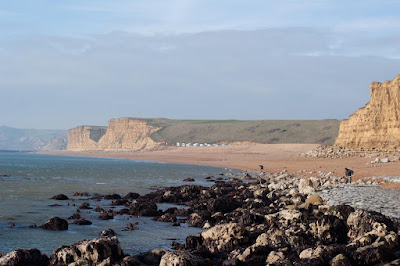 |
| Burton Bradstock, Dorset |
Rachel Knowles writes clean/Christian Regency era romance and historical non-fiction. She has been sharing her research on this blog since 2011. Rachel lives in the beautiful Georgian seaside town of Weymouth, Dorset, on the south coast of England, with her husband, Andrew.
Find out more about Rachel's books and sign up for her newsletter here.
If you have enjoyed this blog and want to encourage me and help me to keep making my research freely available, please buy me a virtual cup of coffee by clicking the button below.
This post was updated in June 2017 to include references to Ramsgate and
Southend, more quotes from Jane Austen’s work and letters, and updated
sections on Brighton and Weymouth.
Notes
(1) From Sanditon by Jane Austen and another lady (1875).
(2) From Emma by Jane Austen (1815).
(3) In a letter dated 3-6 July 1813 in Jane Austen’s Letters edited by Deirdre Le Faye (1995).
(4) From Pride and Prejudice by Jane Austen (1813).
(5) In a letter from Jane Austen dated 14 September 1804 recorded in Jane Austen, Her Life and Letters by William and Richard Austen-Leigh (1913).
(6) From Persuasion by Jane Austen (1817).
(7) From Persuasion by Jane Austen (1817).
(8) In a letter from Jane Austen dated 14 September 1804, from Jane Austen’s Letters edited by Deirdre Le Faye (1995).
(9) From Emma by Jane Austen (1815).
(10) From Emma by Jane Austen (1815).
(11) In a letter from Jane Austen to her sister dated 8 January 1799, from The Letters of Jane Austen selected from the compilation of Lord Bradbourne (1892).
(12) See text for the above letter and accompanying note in Jane Austen’s Letters edited by Deirdre Le Faye (1995). My thanks to Yoram Cohen for pointing out this mistake in my original post.
(13) Referring to the Princess of Wales, Jane wrote: “Poor Woman, I shall support her as long as I can, because she is a Woman, & because I hate her husband.” In a letter from Jane Austen to Martha Lloyd dated 16 February 1813 in Jane Austen’s Letters edited by Deirdre Le Faye (1995).
(14) From Pride and Prejudice by Jane Austen (1813).
(15) From Mansfield Park by Jane Austen (1814).
(16) In a letter to Frank Austen dated 3-6 July 1813 in Jane Austen’s Letters edited by Deirdre Le Faye (1995).
(17) From Emma by Jane Austen (1815).
(18) From Emma by Jane Austen (1815).
Sources used include:
Austen, Jane, and another lady, Sanditon (1975)
Austen, Jane, Emma (1815)
Austen, Jane, Jane Austen's Letters, Collected and Edited by Le Faye, Deirdre (Oxford University Press, 1995)
Austen, Jane, Mansfield Park (1814)
Austen, Jane, My dear Cassandra, letters to her sister selected and introduced by Penelope Hughes-Hallett (Collins & Brown Ltd, 1990)
Austen, Jane, Northanger Abbey and Persuasion (1817)
Austen, Jane, Pride and Prejudice (1813)
Austen, Jane, Sense and Sensibility (1811)
Austen, Jane, The Letters of Jane Austen selected from the compilation of her great nephew, Edward, Lord Bradbourne ed Sarah Woolsey (1892)
Austen-Leigh, William and Richard Arthur, Jane Austen, Her Life and Letters (1913)
Butcher, Rev Edmund, A new guide descriptive of the beauties of Sidmouth (1830, Exeter)
Cecil, David, A Portrait of Jane Austen (Constable, 1978; Penguin, 1980, London)
Chedzoy, Alan, Seaside Sovereign - King George III at Weymouth (The Dovecote Press, 2003, Wimborne)
Feltham, John, Editor of the Picture of London, A Guide to all the Watering and Sea-Bathing Places (1815)
Simpkin & Marshall, Weymouth as a Watering Place (Simpkin & Marshall, 1857, London)
Photographs © RegencyHistory.net

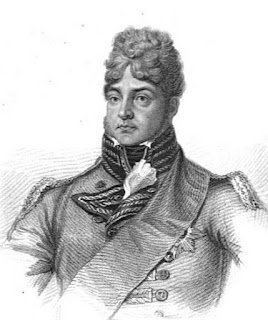

 Rachel
Knowles writes clean/Christian historical romance set in the time of Jane
Austen. She has been sharing her research on this blog since 2011. Rachel lives
in the beautiful Georgian seaside town of Weymouth, Dorset, on the south coast
of England, with her husband, Andrew.
Rachel
Knowles writes clean/Christian historical romance set in the time of Jane
Austen. She has been sharing her research on this blog since 2011. Rachel lives
in the beautiful Georgian seaside town of Weymouth, Dorset, on the south coast
of England, with her husband, Andrew. 

